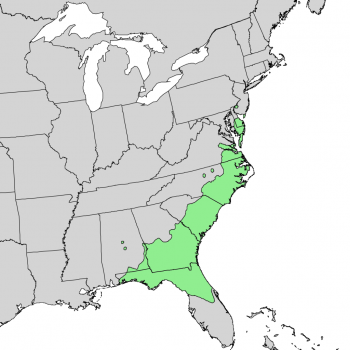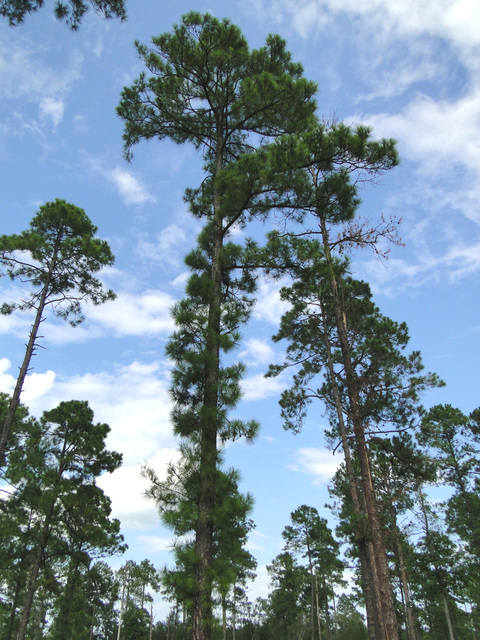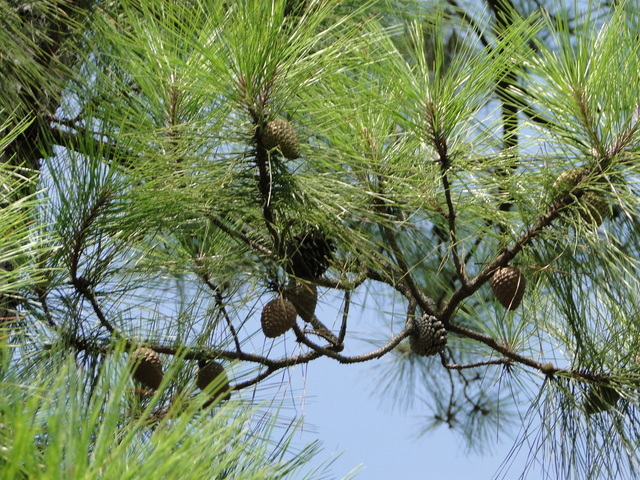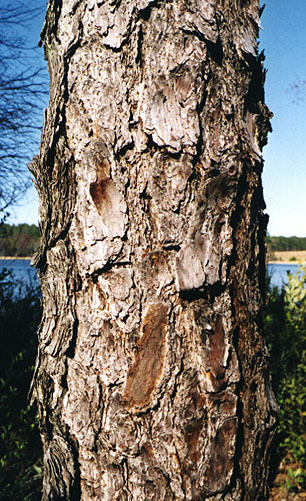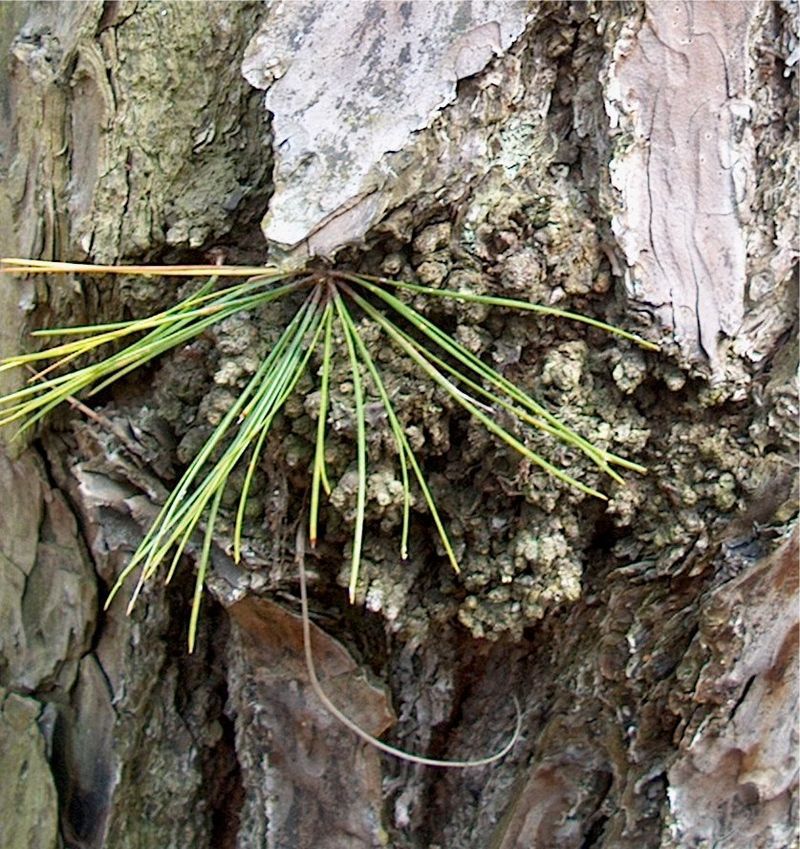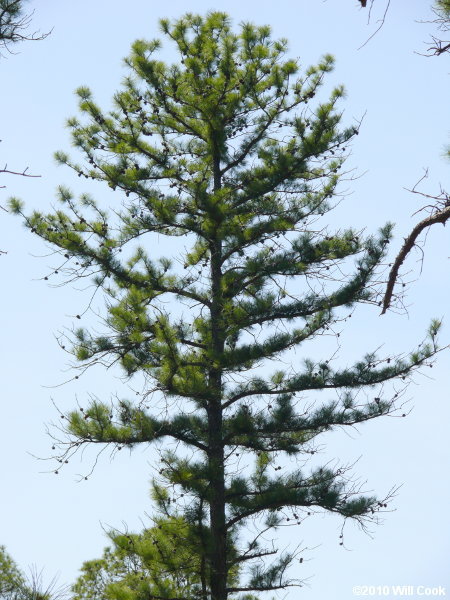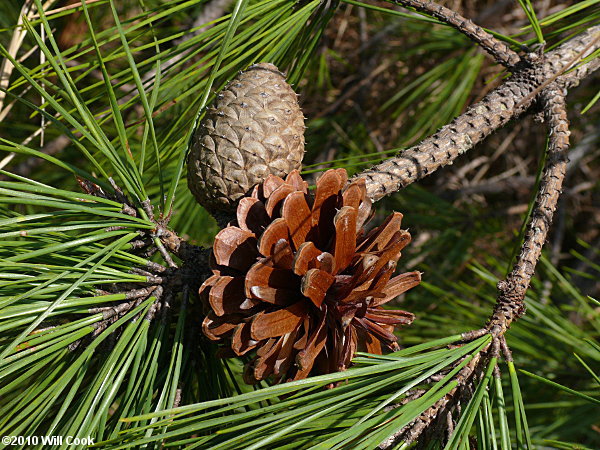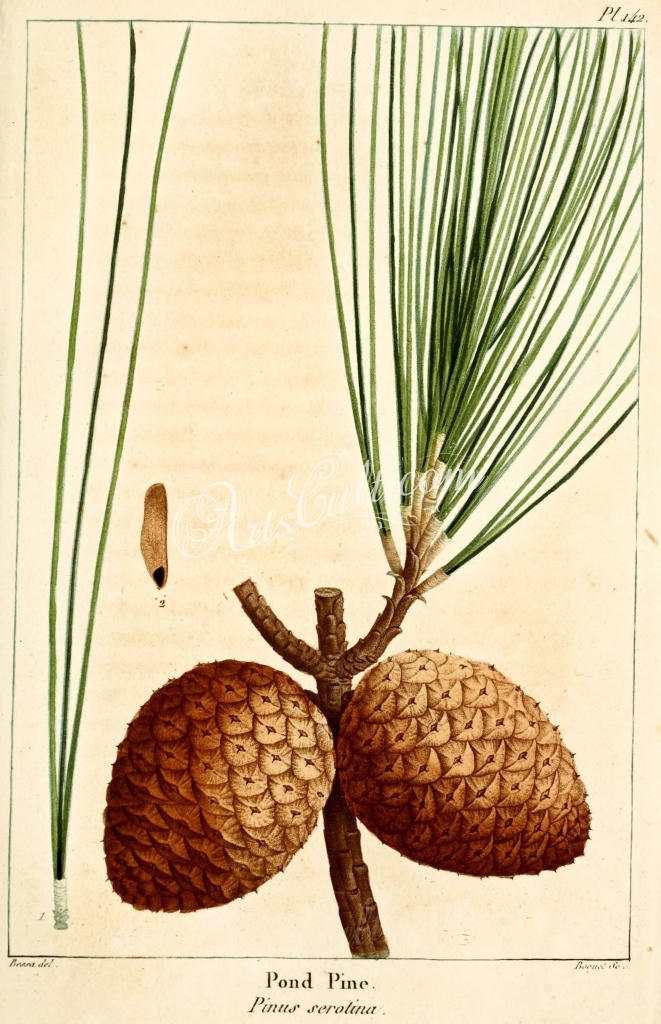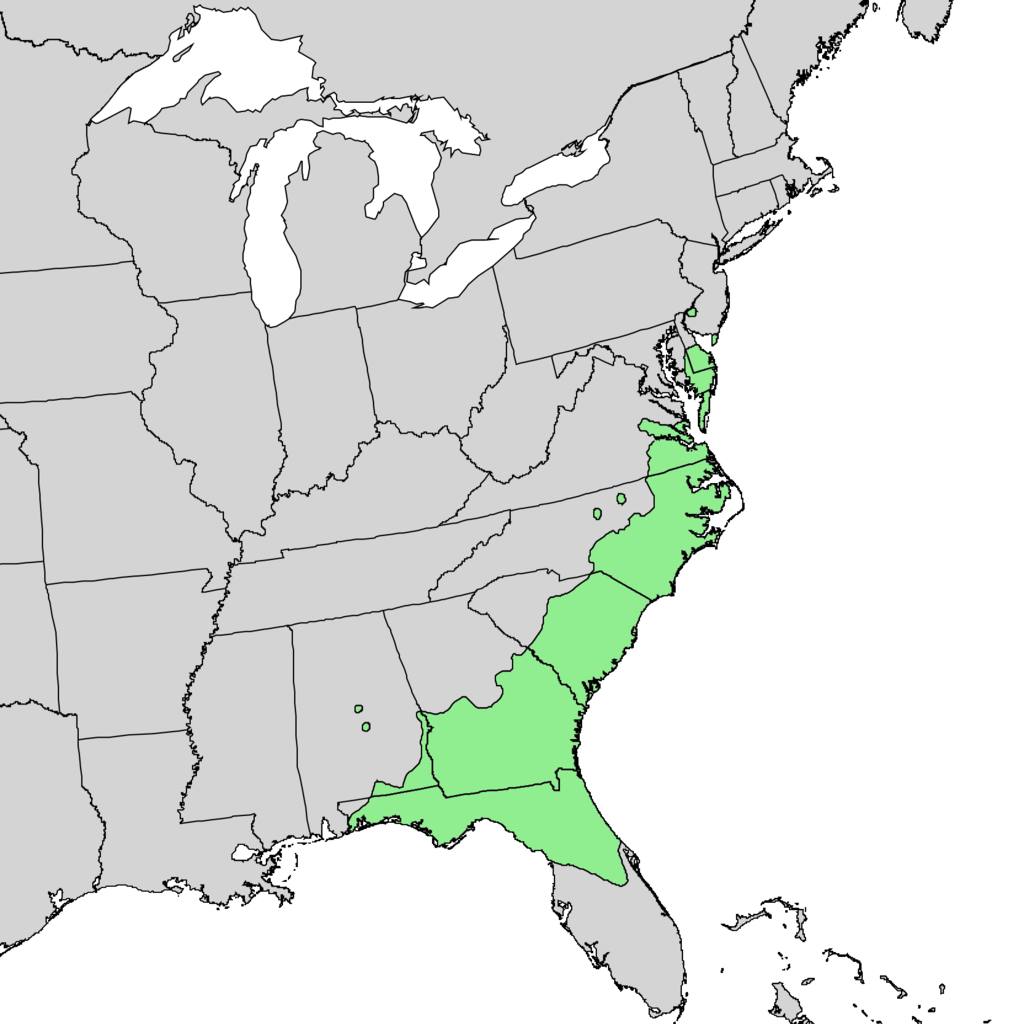subgenus Pinus, section Trifoliae (Duhamel), subsection Australes (Loudon).
Pinus serotina, as described in 1803 by André Michaux (1746-1803), in Flora Boreali-Americana, 2nd edition, is commonly known as pond pine, marsh pine, or pocosin pine. The species name describes this tree's tendency to retain closed seed cones for many years, to be opened when exposed to fire (serotiny).
Ethnobotany. Plantations of P. serotina much resembles P. taeda, with which it hybridizes naturally. It is of increasing importance as pulpwood.
Description. Pond pine is an evergreen coniferous species of tree that grows to mature heights of 70 feet (21 m) with straight or more often crooked trunk up to 24 inches (60 cm) in diameter, measured at breast height, commonly bearing adventitious sprouts. Crowns become thin and ragged with age, often broadly rounded or flat.
- Bark is red-brown in color, irregularly furrowed and cross-checked into rectangular, flat, scaly plates.
- Branches grow spreading to ascending; twigs are stout, colored orange- to yellow-orange, frequently glaucous, aging darker.
- Foliar buds are ovoid to narrowly ovoid shaped, resinous, colored red-brown, measuring 0.4 to 0.6 inch (1 - 1.5 cm) long.
- Leaves (needles) are borne 3 per fascicle (up to 5 in adventitious or disturbed growth), growing spreading to ascending, persisting 2-3 years on the tree. Individual needles measure 6 to 8 inches (15 - 20 cm) long by 0.052 to 0.06 inch (1.3 - 1.5 mm) thick, growing with a slight twist, tufting at twig tips. They are yellow-green in color; all surfaces bear fine lines of stomatan, serrulate margins, and acuminate apices.
- Foliar sheaths measure 0.4 to 0.8 inch (1 - 2 cm) with a persistent bases.
- Pollen cones are cylindric shaped, yellow-brown in color and up to 1.8 inches (30 mm) long.
- Seed cones mature 2 years after pollination. At that time, some populations begin to shed seeds, but more often variably serotinous, long-persistent. Individual cones are often symmetrically whorled, ovoid to lanceoloid shaped before opening, broadly ovoid to nearly globose when open, measuring 2 to 3.2 inches (5 - 8 cm) long, colored pale red-brown to creamy brown, attached sessile or on peduncles up to 0.4 inch (1 cm) long.
- Seed scales have a dark, red-brown border on the distal adaxial surfaces. Apophyses are slightly thickened, low, with a rhombic outline, and low cross-keeled. Umbos are centrally oriented, low-conic, with short, weak prickles, sometimes unarmed.
- Seeds are ellipsoid, with an oblique tip, and are somewhat compressed, with a 0.2 to 0.24 inch (5-6 mm) body, colored pale brown, mottled darker to nearly black, with an attached wing up to 0.8 inch (20 mm) long.
Distribution. This species is native to USA - New Jersey, Delaware, Maryland, Virginia, North Carolina, South Carolina, Georgia, Florida & Alabama, found at elevations of sea level to 650 feet (200 m), in flatwoods, flatwoods bogs, savannas, and barrens.
Hardy to USDA Zone 8 - cold hardiness limit between 10° and 20°F (-12.1° and -6.7°C).

